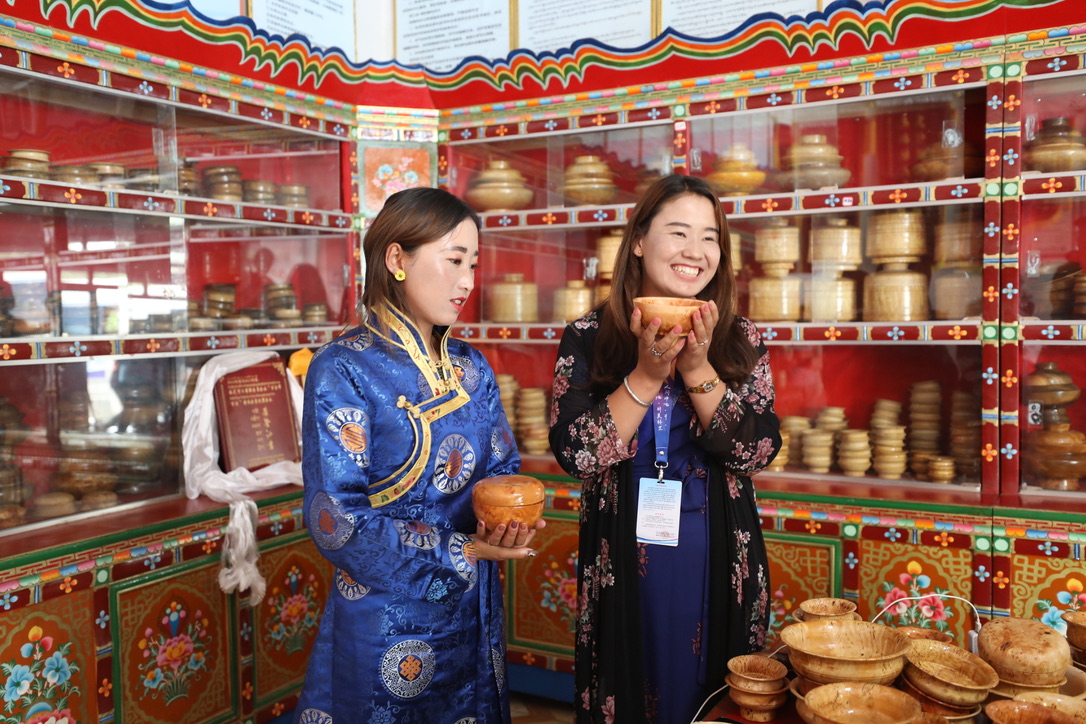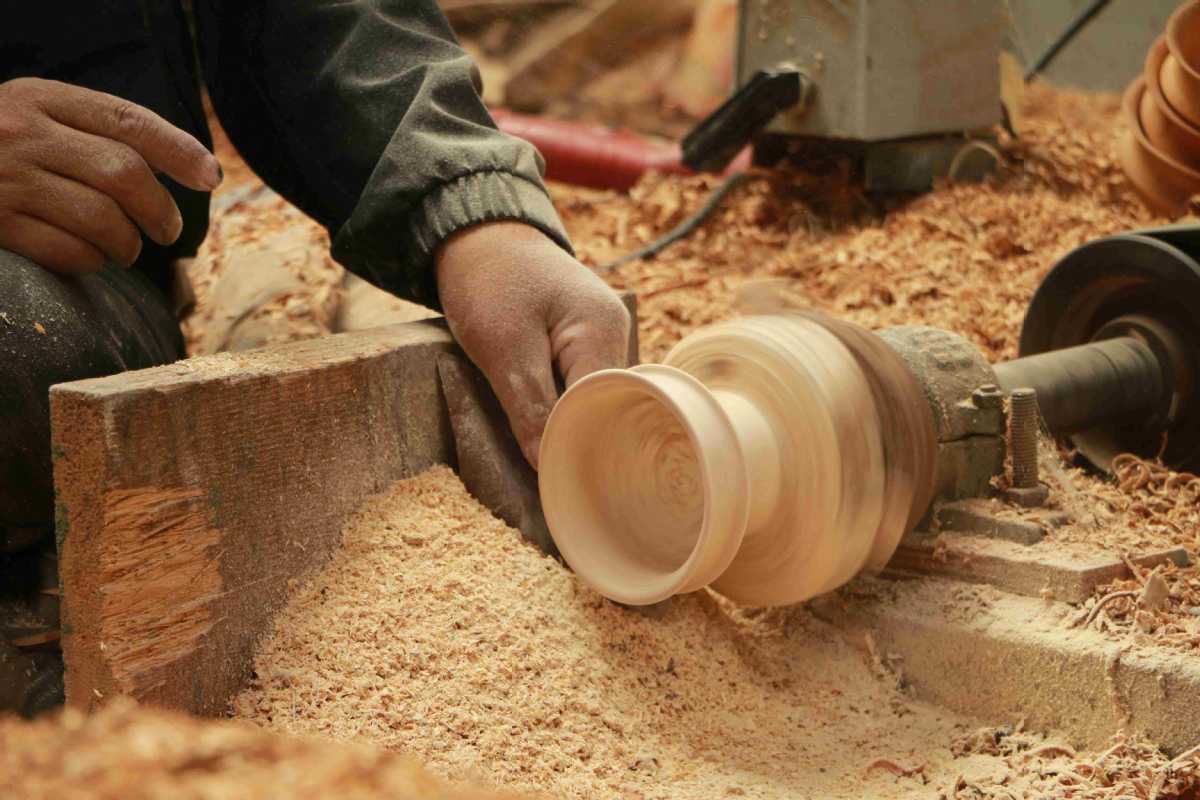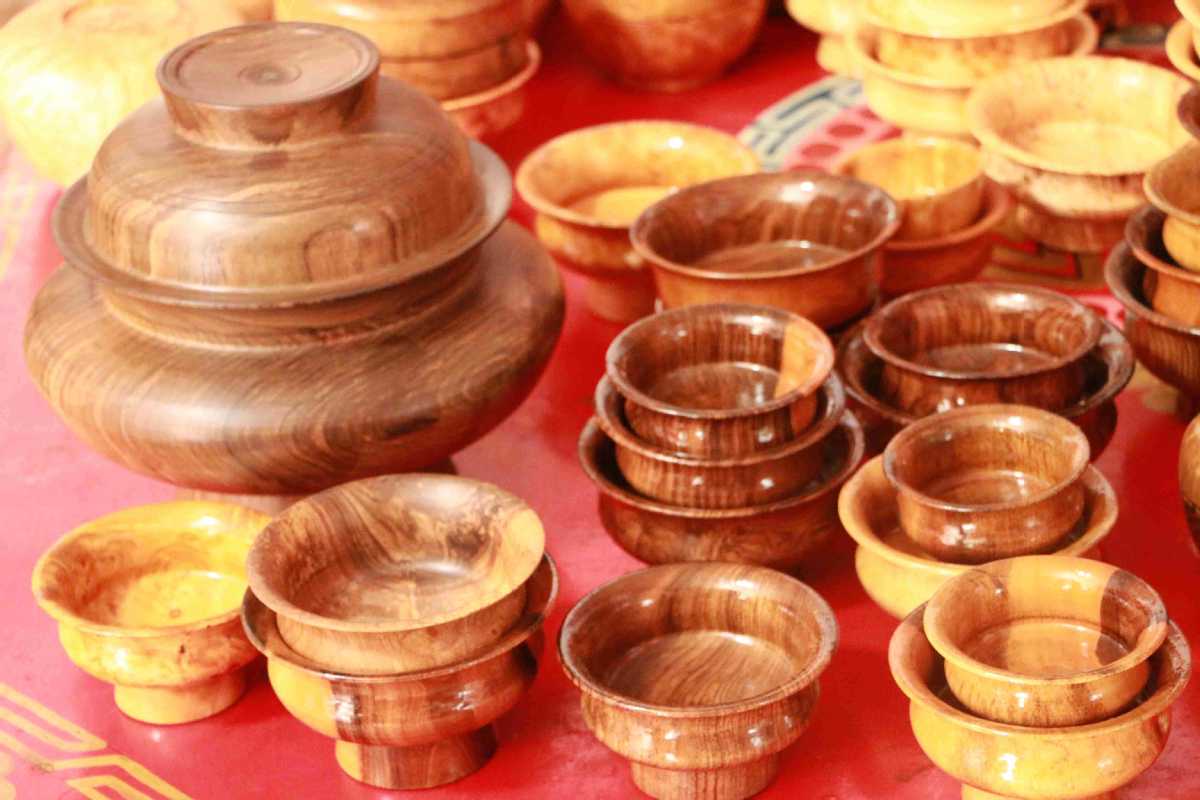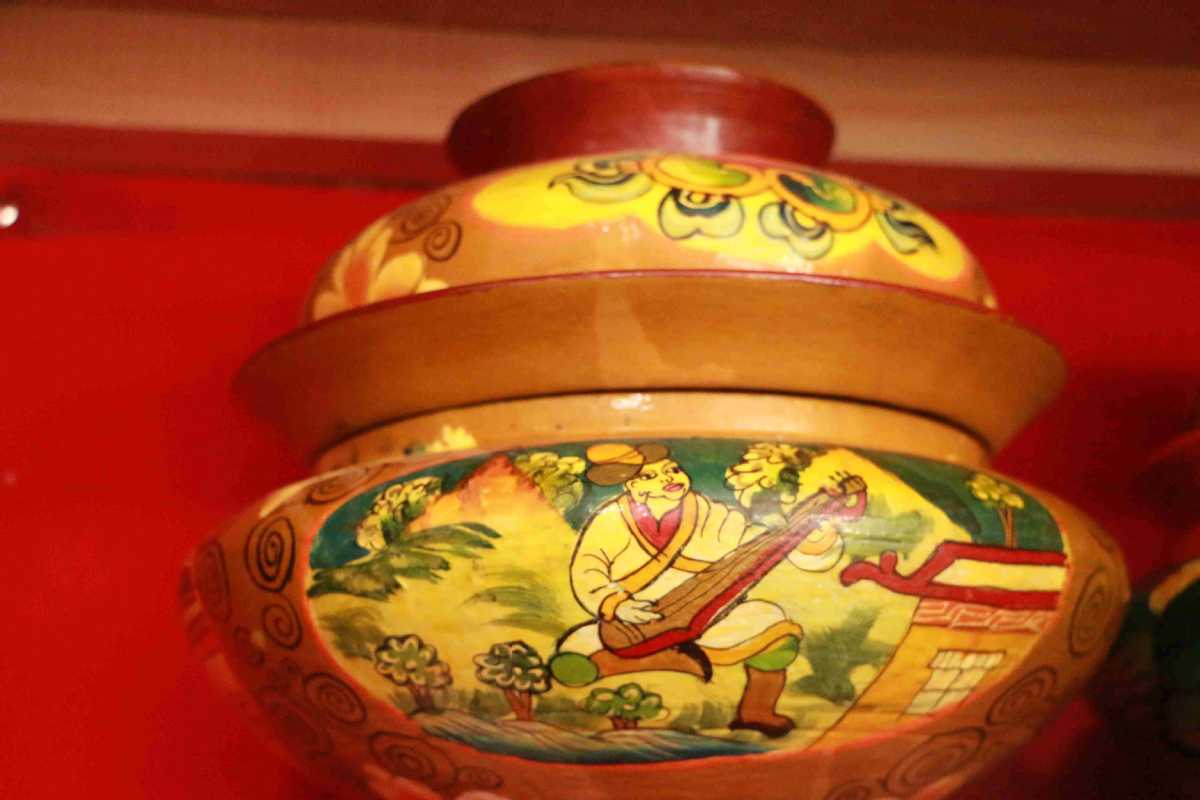Traditional wooden bowls help lift Tibetan village out of poverty
After serving as Party head in Tangbumba village for six years, Pema Tobgye did not expect that traditional Tibetan wooden bowls, commonly seen in Tibetan families, could help lift this poverty-stricken village out of poverty.
Tangbumba village had been a key poor village in Orong town in Nyingchi city, Southwest China’s Tibet autonomous region for many years. According to a village official, "the per capita arable area in the village was only 887 sq m, and the villagers were not well educated and lacked the ability to learn professional skills." These factors made Tangbumba village the most impoverished in Orong town, with the most arduous task of poverty alleviation.
To lead the villagers to a better life, Pema Tobgye had numerous ideas in head. He thought of tourism, but the local natural scenery is not as beautiful as surrounding towns and there were not many tourists; he thought of growing herbs, but scarce land and shortcomings in technology are a big problem.

Pema Tobgye is Party head of Tangbumba village, Orong town in Nyingchi city, Southwest China's Tibet autonomous region. He holds a traditional Tibetan wooden bowl, on Aug 20, 2020. [Photo by Zhang Yifan/For chinadaily.com.cn]
Finally he thought of the Gyatsa county in Lhokha city, which is very close to Nang county, where Tangbumba village is located. It has a long history of making wooden bowls. So he thought they too could make wooden bowls. So Pema Tobgye immediately went to Lhokha city to explore the "bowl business".
In March 2016, Pema Tobgye raised more than 300,000 yuan ($43,420) through bank loans and applying for poverty alleviation funds from the government, and set up the Tibetan Wooden Bowl Cooperative.
"The masters who taught us how to make the bowls were all hired from Lhokha city, and they all have more than 20 years' experience," he said.
At present, the cooperative covers an area of 240 square meters, with a usable floor area of 200 square meters. It has nine workers and two workshops (a painting workshop and bowl-processing workshop), mainly engaging in the production and sales of Tibetan wooden bowls and Tibetan tea sets.

A worker makes a traditional Tibetan wooden bowl, in Tangbumba village, Orong town in Nyingchi city, Southwest China's Tibet autonomous region Aug 20, 2020. [Photo by Zhang Yifan/For chinadaily.com.cn]
"The government granted us great help," said Pema Tobgye. "They offered us subsidies, and assisted us to extend our bowl-processing workshop. We villagers in Tangbumba appreciate what they did for us from bottom of our hearts."
Due to the COVID-19 pandemic at the beginning of 2020, sales suffered greatly. That was when Pema Tobgye started to actively explore new business models for selling the wooden bowls.
He saw several young people in the village perform traditional Tibetan dance on the livestreaming platform Douyin, and they had many fans, so he thought of making use of those popular platforms. He invited two women who are "stars" on Douyin, letting them sell wooden bowls via livestreaming, and gave them a salary of 150 yuan for every two hours they worked.

Two women sell traditional Tibetan wooden bowls via livestreaming on Douyin, a popular short-video sharing app, in Tangbumba village, Orong town in Nyingchi city, Southwest China's Tibet autonomous region, on Aug 20, 2020. [Photo by He Huizhong/For chinadaily.com.cn]
Pema Tobgye's efforts finally paid off. The wooden bowls have sold more than 50,000 yuan on live-streaming platforms since March, plus offline sales, and the cooperative had a total of more than 80,000 yuan in revenue.
Losang Tenzin, the mayor of Orong town, said in the past, Tangbumba villagers' income mainly came from farming, raising livestock, and even just waiting for subsidies from the government. But now they have learned real craftsmanship in making the wooden bowls and increased their incomes on their own.
By the end of 2019, income in Tangbumba village reached 5.04 million yuan, with per capita net income of more than 19,000 yuan.

A worker in Tangbumba village, Orong town in Nyingchi city, Southwest China's Tibet autonomous region, makes a traditional Tibetan wooden bowl, Aug 20, 2020. [Photo by Zhang Yifan/For chinadaily.com.cn]

Hand-made traditional Tibetan wooden bowls are lustrous and feature beautifully polished wood. [Photo by Zhang Yifan/For chinadaily.com.cn]

This handmade traditional Tibetan wooden bowl features fine details. [Photo by Zhang Yifan/For chinadaily.com.cn]
